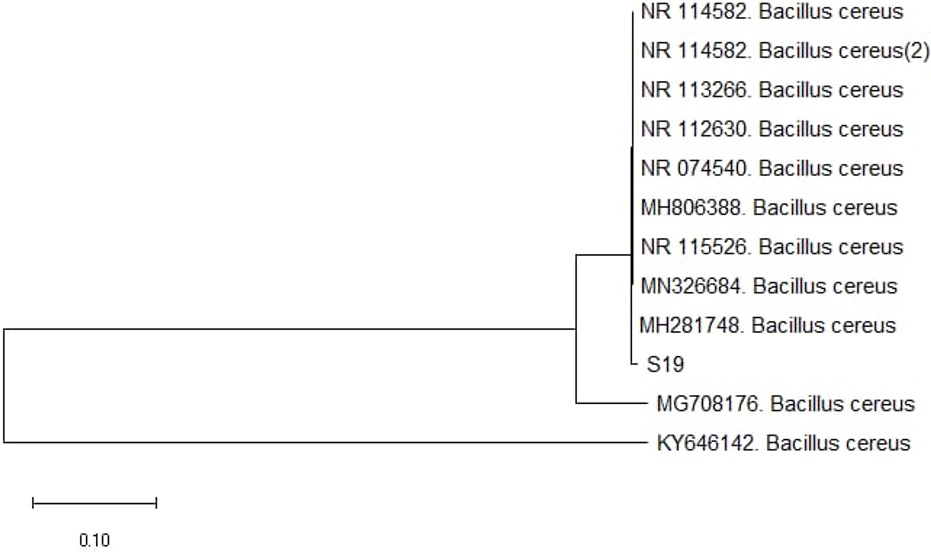Abstract
Many soil microorganisms’ i.e., bacteria and fungi produce secondary metabolites called antibiotics. These are used for the treatment of some of the bacterial, fungal and protozoal diseases of humans. There is a need for isolation of a broad spectrum of antibiotics from microorganisms due to the emergence of antibiotic resistance. In the present study two antibiotic producing bacteria Klebsiella pneumoniae and Bacillus cereus were isolated from pharmaceutical and poultry feed industry of Hattar, Haripur Pakistan. Total 10 waste samples were collected from different industries (Marble, Ghee, Soap, Mineral, Steel, Poultry Feed, Pharmaceutical, Qarshi, Cosmetic and Glass). Thirty-three bacterial strains were isolated from industrial wastes of these ten different industries. Fourteen out of thirty-three bacterial strains exhibited antimicrobial activities against at least one of the test microbes considered in this study including Escherchia coli, Staphylococcus aureus and Salmonella typhi. The bacteria were isolated by standard serial dilution spread plate technique. Morphological characterization of the isolates was done by Gram staining. Nine bacterial isolates out of fourteen were initially identified as B. cereus and five as K. pneumoniae through biochemical characterization. The antibacterial activities were tested by well diffusion method. Maximum number of antibiotic producing bacteria were isolated from pharmaceutical and poultry feed industry based on the results of primary screening, the most potential isolates S9, S19, S20, S22 and S23 were selected for secondary screening. The maximum activity against E. coli and S. aureus was recorded by bacterial isolate S19 i.e zones of inhibition of 6.5mm and 9mm while S20 showed 7.5mm and 6mm zones respectively. Molecular identification was carried out on the basis of 16S rRNA sequence analysis. Finally, the isolates were identified as B. cereus accession number LC538271and K. pneumoniae accession number MT078679. Analysis of bacterial extract S20 through GC-MS indicated the presence of 8 compounds of diverse nature and structure. Present study suggests that wastes of pharmaceutical and poultry feed industry may have antibiotic producing bacteria. These bacteria could be utilized for the production of antibiotics. B. cereus and K. pneumoniae isolated from wastes of poultry feed and pharmaceutical industries have the potential to produce antibiotics and could be used to control the microbial growth.
Keywords:
antibiotic producing microorganisms; antibacterial activity; zone of inhibition; soil sample; well diffusion method; spread plate technique

 Thumbnail
Thumbnail
 Thumbnail
Thumbnail
 Thumbnail
Thumbnail
 Thumbnail
Thumbnail
 Thumbnail
Thumbnail
 Thumbnail
Thumbnail





